4 min read
Preparations for Next Moonwalk Simulations Underway (and Underwater) 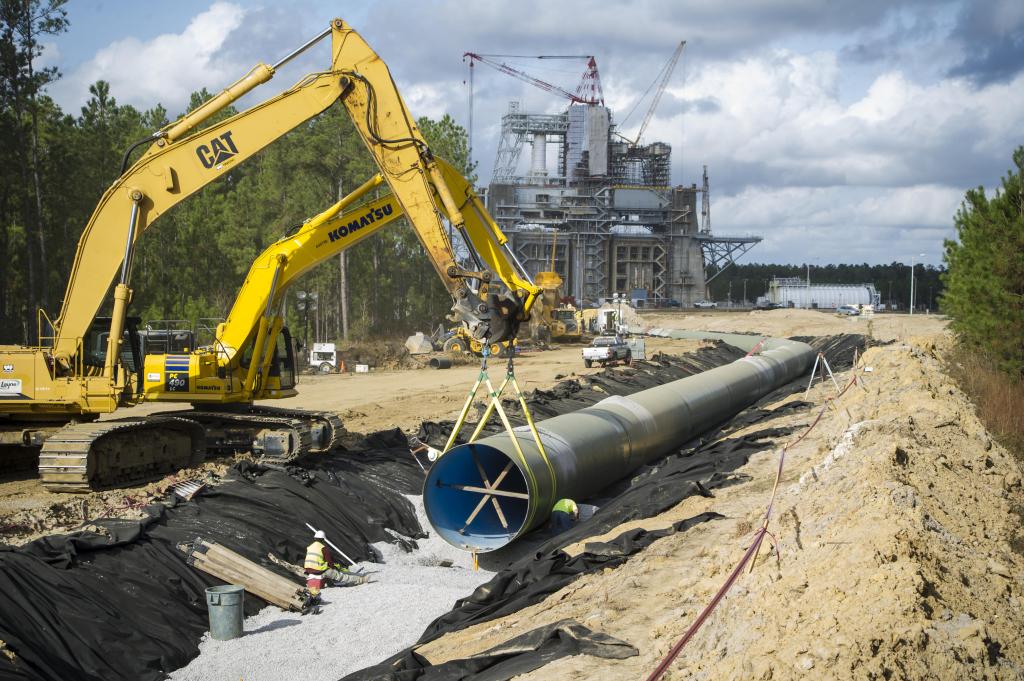 Water piping is installed near the Thad Cochran Test Stand (B-1/B-2) at NASA’s Stennis Space Center in December 2014. The project to replace and upgrade the center’s high pressure industrial water system was a key milestone in preparations to test the SLS (Space Launch System) core stage ahead of the successful Artemis I launch.NASA/Danny Nowlin
Water piping is installed near the Thad Cochran Test Stand (B-1/B-2) at NASA’s Stennis Space Center in December 2014. The project to replace and upgrade the center’s high pressure industrial water system was a key milestone in preparations to test the SLS (Space Launch System) core stage ahead of the successful Artemis I launch.NASA/Danny Nowlin 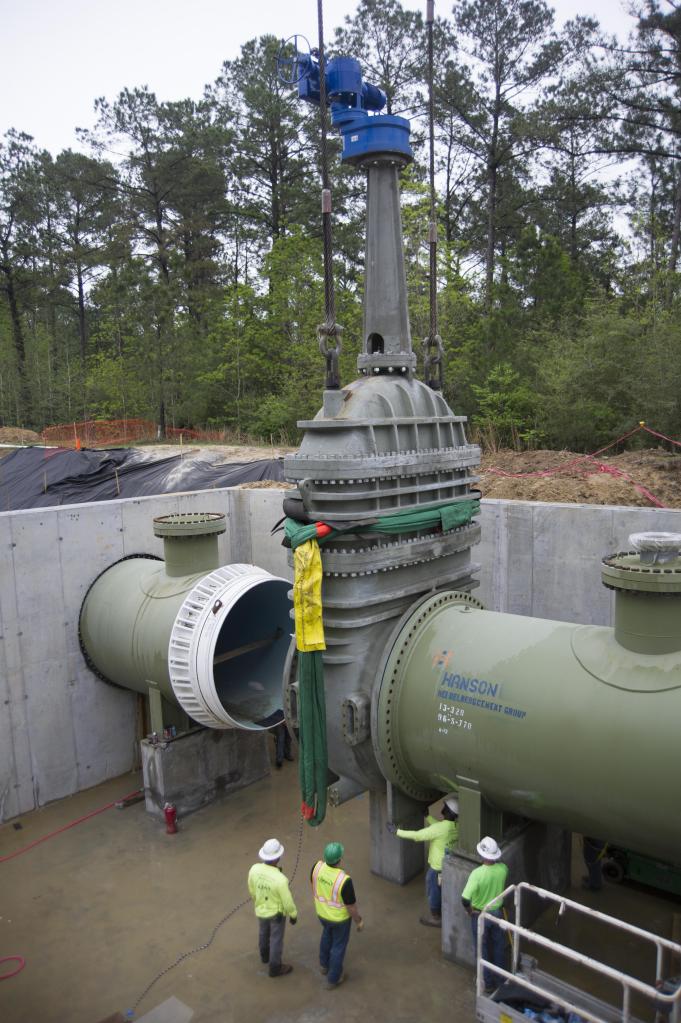 Employees install a 96-inch valve near the Thad Cochran Test Stand (B-1/B-2) at NASA’s Stennis Space Center as part of a high-pressure industrial water upgrade project in March 2015.NASA/Danny Nowlin
Employees install a 96-inch valve near the Thad Cochran Test Stand (B-1/B-2) at NASA’s Stennis Space Center as part of a high-pressure industrial water upgrade project in March 2015.NASA/Danny Nowlin 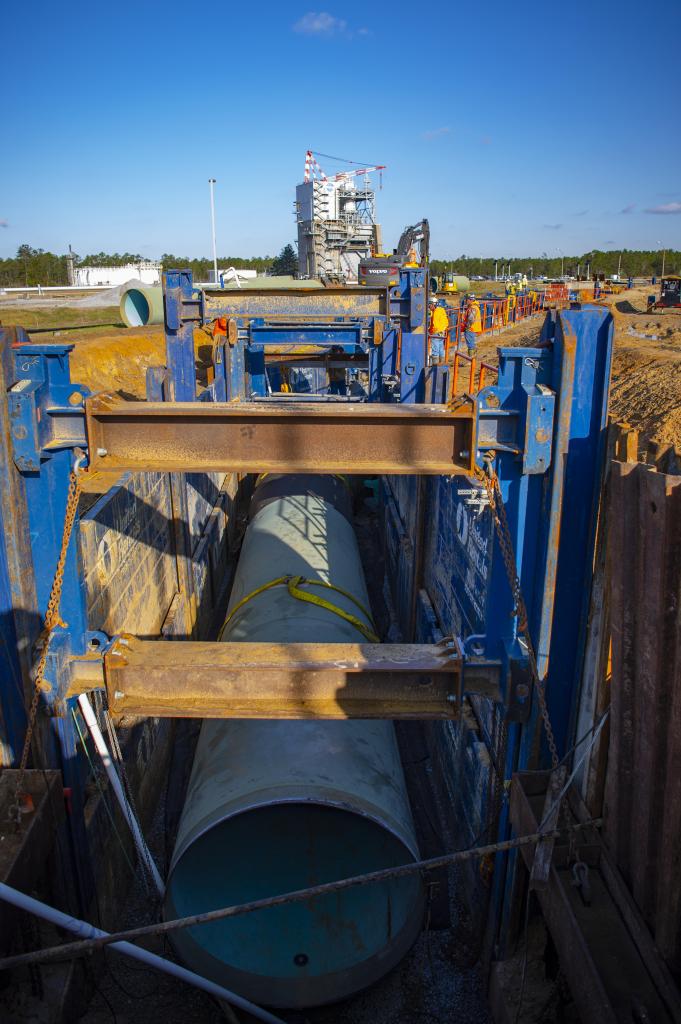 In this March 2022 photo, crews use a shoring system to hold back soil as they install new 75-inch piping leading from the NASA Stennis High Pressure Industrial Water Facility to the valve vault pit serving the Fred Haise Test Stand.NASA/Danny Nowlin
In this March 2022 photo, crews use a shoring system to hold back soil as they install new 75-inch piping leading from the NASA Stennis High Pressure Industrial Water Facility to the valve vault pit serving the Fred Haise Test Stand.NASA/Danny Nowlin  Crews use a specially designed tool to place a new pipeline liner inside the existing carrier pipe near the Fred Haise Test Stand in 2024 in the last phase of updating the original test complex industrial water system at NASA’s Stennis Space Center.NASA/Danny Nowlin
Crews use a specially designed tool to place a new pipeline liner inside the existing carrier pipe near the Fred Haise Test Stand in 2024 in the last phase of updating the original test complex industrial water system at NASA’s Stennis Space Center.NASA/Danny Nowlin 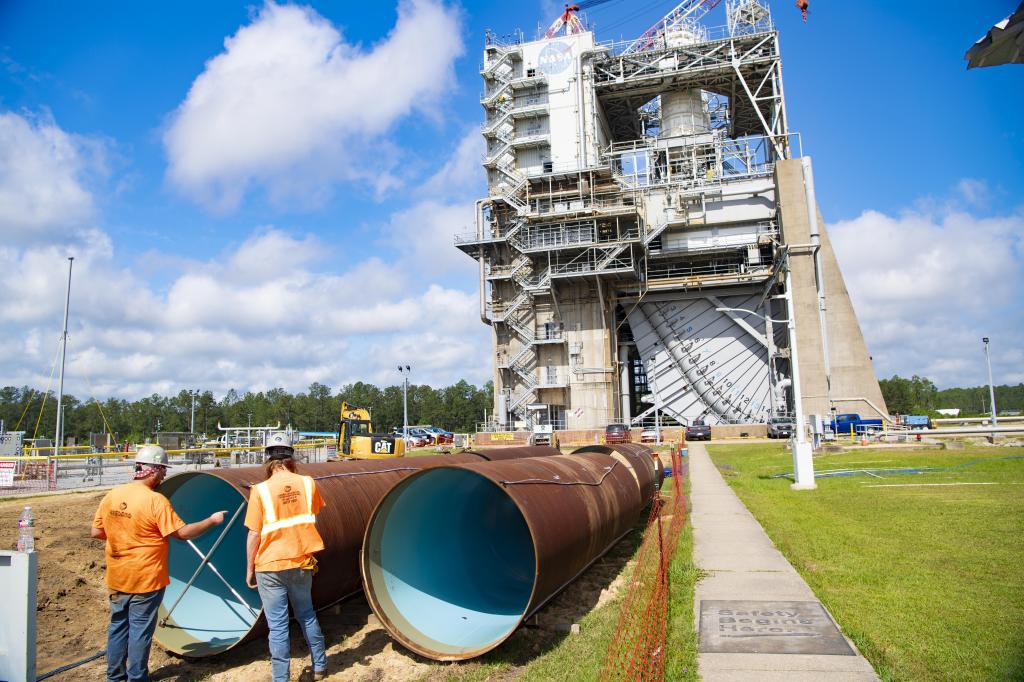 Crews prepare new pipeline liner sections for installation near the Fred Haise Test Stand in 2024 in the last phase of updating the original test complex industrial water system at NASA’s Stennis Space Center.NASA/Danny Nowlin For almost 60 years, NASA’s Stennis Space Center has tested rocket systems and engines to help power the nation’s human space exploration dreams. Completion of a critical water system infrastructure project helps ensure the site can continue that frontline work moving forward.
Crews prepare new pipeline liner sections for installation near the Fred Haise Test Stand in 2024 in the last phase of updating the original test complex industrial water system at NASA’s Stennis Space Center.NASA/Danny Nowlin For almost 60 years, NASA’s Stennis Space Center has tested rocket systems and engines to help power the nation’s human space exploration dreams. Completion of a critical water system infrastructure project helps ensure the site can continue that frontline work moving forward.
“The infrastructure at NASA Stennis is absolutely critical for rocket engine testing for the agency and commercial companies,” said NASA project manager Casey Wheeler. “Without our high pressure industrial water system, testing does not happen. Installing new underground piping renews the lifespan and gives the center a system that can be operated for the foreseeable future, so NASA Stennis can add to its nearly six decades of contributions to space exploration efforts.”
The high pressure industrial water system delivers hundreds of thousands of gallons of water per minute through underground pipes to cool rocket engine exhaust and provide fire suppression capabilities during testing. Without the water flow, the engine exhaust, reaching as hot as 6,000 degrees Fahrenheit, could melt the test stand’s steel flame deflector.
Each test stand also features a FIREX system that holds water in reserve for use in the event of a mishap or fire. During SLS (Space Launch System) core stage testing, water also was used to create a “curtain” around the test hardware, dampening the high levels of noise generated during hot fire and lessening the video-acoustic impact that can cause damage to infrastructure and the test hardware.
Prior to the system upgrade, the water flow was delivered by the site’s original piping infrastructure built in the 1960s. However, that infrastructure had well exceeded its expected 30-year lifespan.
Scope of the Project
The subsequent water system upgrade was planned across multiple phases over a 10-year span. Crews worked around ever-changing test schedules to complete three major projects representing more than $50 million in infrastructure investment.
“Many people working the construction jobs for these projects are from the Gulf Coast area, so it has created jobs and work for the people doing the construction,” Wheeler said. “Some of the specialty work has had people coming in from all over the country, as well as vendors and suppliers that are supplying the materials, so that has an economic impact here too.”
Crews started by replacing large sections of piping, including a 96-inch line, from the 66-million-gallon onsite reservoir to the Thad Cochran (B-1/B-2) Test Stand. This phase also included the installation of a new 25,000-gallon electric pump at the High Pressure Industrial Water Facility to increase water flow capacity. The upgrades were critical for NASA Stennis to conduct Green Run testing of the SLS core stage in 2020-21 ahead of the successful Artemis I launch.
Work in the A Test Complex followed with crews replacing sections of 75-inch piping from the water plant and installing several new 66-inch gate valves.
In the final phase, crews used an innovative approach to install new steel liners within existing pipes leading to the Fred Haise Test Stand (formerly A-1 Test Stand). The work followed NASA’s completion of a successful RS-25 engine test campaign last April for future Artemis missions to the Moon and beyond. The stand now is being prepared to begin testing of new RS-25 flight engines.
Overall, the piping project represents a significant upgrade in design and materials. The new piping is made from carbon steel, with protective linings to prevent corrosion and gate valves designed to be more durable.
Importance of Water
It is hard to overstate the importance of the work to ensure ongoing water flow. For a typical 500-second RS-25 engine test on the Fred Haise Test Stand, around 5 million gallons of water is delivered from the NASA Stennis reservoir through a quarter-of-a-mile of pipe before entering the stand to supply the deflector and cool engine exhaust.
“Without water to cool the deflector and the critical parts of the test stand that will get hot from the hot fire itself, the test stand would need frequent corrective maintenance,” Wheeler said. “This system ensures the test stands remain in a condition where continuous testing can happen.”
Keep Exploring Discover Related Topics Missions


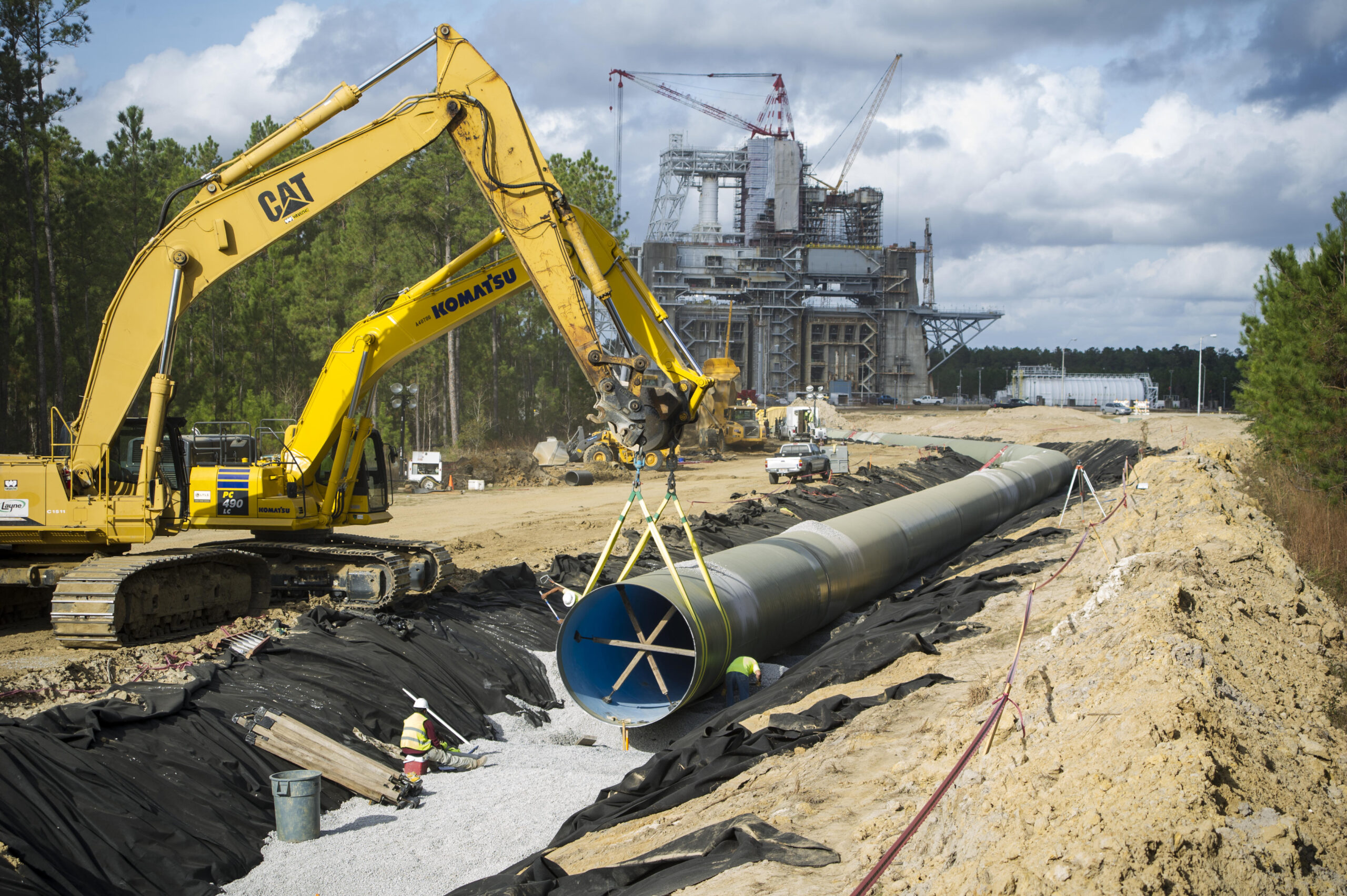
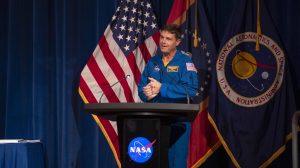 7 min read Lagniappe for September 2024 Article 3 weeks ago
7 min read Lagniappe for September 2024 Article 3 weeks ago 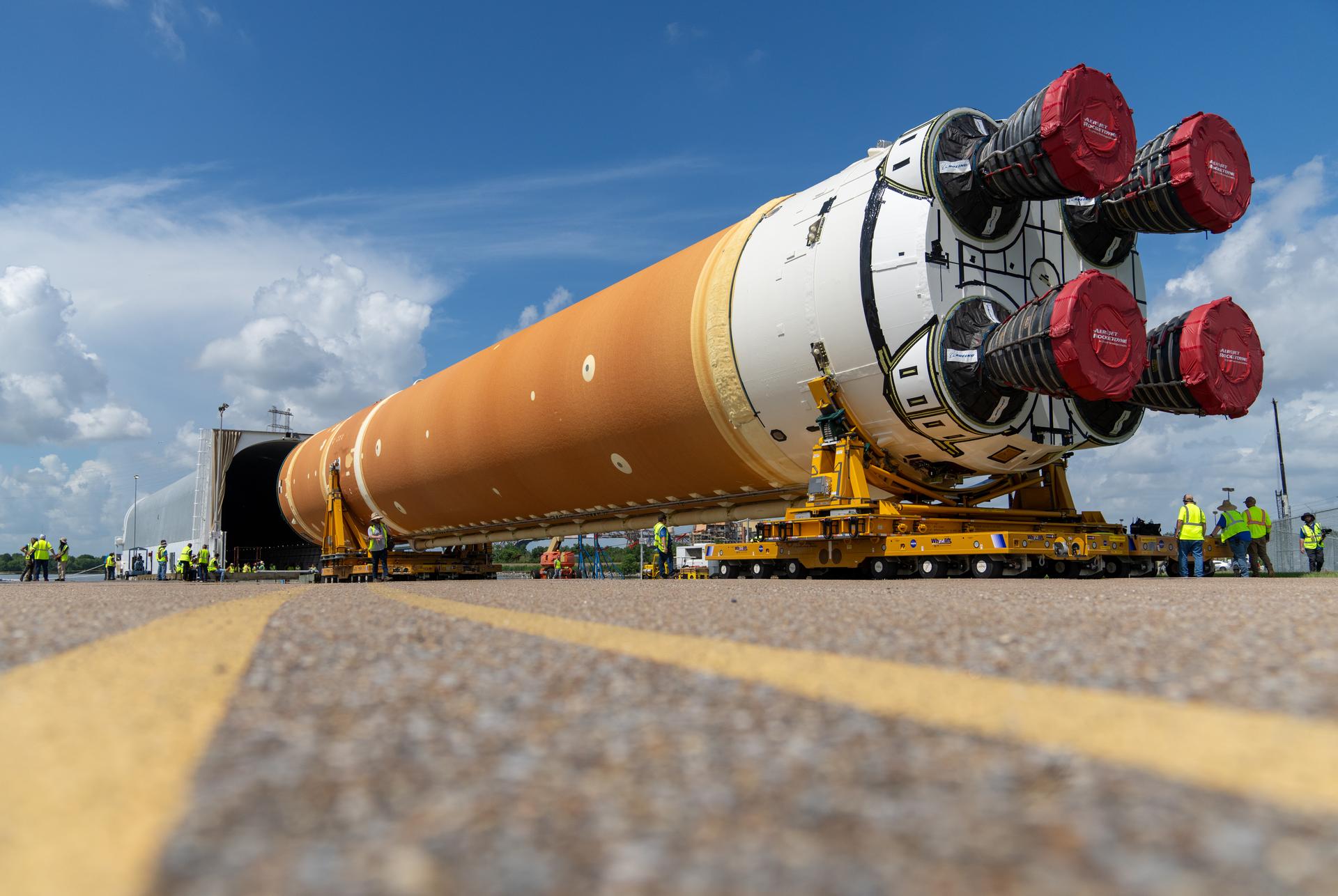 5 min read Lagniappe for August 2024 Article 2 months ago
5 min read Lagniappe for August 2024 Article 2 months ago 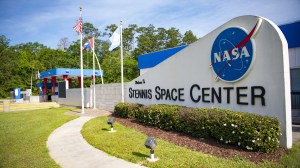 4 min read NASA Stennis Flashback: Shuttle Team Achieves Unprecedented Milestone Article 2 months ago
4 min read NASA Stennis Flashback: Shuttle Team Achieves Unprecedented Milestone Article 2 months ago 


